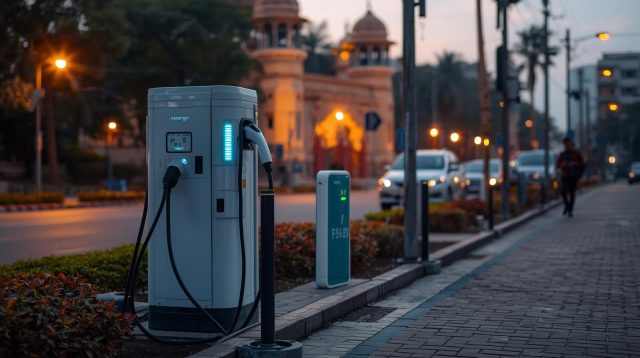Breaking Down Urban Energy Policy, EV infrastructure, and Renewable Integration. Meeting EV Charging Requirements of Metro Cities

✅ Why It Matters
Cities like Bengaluru are experiencing:
• Rapid EV adoption (2Ws, 3Ws, cabs, delivery vehicles, private EVs)
• Grid stress (already facing transformer overloads, frequent outages)
• Pollution and climate mandates (need cleaner energy sources)
So the key question is:
Can solar-based EV charging stations help sustainably power this demand without overloading the grid?
🔋 How Solar-Based Charging Stations Help
1. Reduces Pressure on Urban Grid
EV charging causes sharp demand spikes, especially during peak hours (evenings, commercial breaks). Rooftop or solar-integrated charging stations can:
• Shift some of that load off the grid
• Provide localized energy generation, reducing stress on transformers
• Support grid balancing during the day (solar generation = peak sunlight = high urban load)
2. Supports Sustainable, Decentralized Energy
Solar charging:
• Cuts GHG emissions (cleaner than coal-dominated grid)
• Uses available rooftop/parking spaces (especially in metro stations, malls, offices, EV depots)
• Aligns with smart city and net-zero goals (urban climate targets)
3. Lowers Long-Term Energy Costs
While initial capex is higher, solar power has:
• Low operating cost
• Minimal marginal cost per kWh
• Stable long-term pricing (not volatile like diesel/grid rates)
This can make EV charging cheaper and more predictable for operators, drivers, and fleets.
4. Battery-Integrated Solar Stations Enable Off-Grid or Hybrid Operation
Hybrid systems (solar + battery + grid) allow:
• Night-time charging using stored solar energy
• Load-shifting (charging battery when grid is cheap, supplying EVs later)
• Critical in areas with unreliable grid supply (peri-urban Bengaluru, outskirts)
🚧 Challenges to Widespread Adoption
Challenge Impact
Space constraints Rooftop or parking-space area might not be enough to meet energy demand of multiple EVs.
Intermittency of solar EVs may need power in evenings/nights; solar only generates during day.
Battery cost/storage Batteries required for hybrid systems are expensive (Li-ion/BESS).
High Capex Solar + inverter + charger + battery = high upfront cost. Needs long ROI period or subsidies.
Policy & Regulatory gaps Lack of standardization on EV charging, solar net metering, wheeling policies etc.
🚗 How It Can Work in a City Like Bengaluru
🏙 Urban Context
• Bengaluru has ample solar potential (~5.5 kWh/m²/day)
• Strong EV policy backing (from state and BBMP)
• Heavy 2-wheeler and 3-wheeler EV adoption (short trips, fast turnover)
• Public infrastructure (BMTC depots, metro stations, BBMP buildings) offer rooftop/parking space for solar charging stations
🔋 Realistic Implementation Models
Model Description Viability
Solar + Grid-Tied Charger Uses solar during the day, grid at night. No battery. Medium. Lower cost, but no night-time independence.
Solar + Battery + Grid (Hybrid) Solar charges battery → battery charges EVs anytime. Grid is fallback. High. Ideal for high-use areas, but costly.
EV + Solar + V2G Vehicle-to-grid interaction where EV batteries also support grid or station. Future potential. Not common yet in India.
🔍 Use Cases That Make Sense
• EV cab fleets (e.g. BluSmart, Uber Green) — predictable demand patterns; benefit from day-time solar.
• Delivery/logistics hubs — EV vans/2Ws with planned charging windows.
• Metro stations/office parks/malls — parking + long idle hours = ideal for slow/solar charging.
• Bus depots (e.g. BMTC) — large open spaces + predictable fleet charging.
📊 The Real Opportunity
If even 20-30% of the charging load in Bengaluru could shift to solar-powered systems, it would:
• Reduce diesel genset dependence
• Save crores in grid infrastructure upgrades
• Cut thousands of tons of CO₂/year
• Serve as a scalable model for other Tier 1 cities
🛠️ What’s Needed to Scale
1. Policy incentives: Viability gap funding, net metering for charging infra.
2. Battery cost drops: Local manufacturing (PLI schemes) will help.
3. Standardization: Chargers, inverters, and billing systems.
4. Urban planning: Solar EV stations baked into zoning/building codes.
5. Private partnerships: Tech providers, DISCOMs, startups co-building infra.
✅ Summary
Relying on solar-based EV charging stations is not a silver bullet, but it absolutely can:
• Ease urban grid pressure
• Reduce emissions
• Lower cost over time
• Provide sustainable, scalable EV infrastructure


